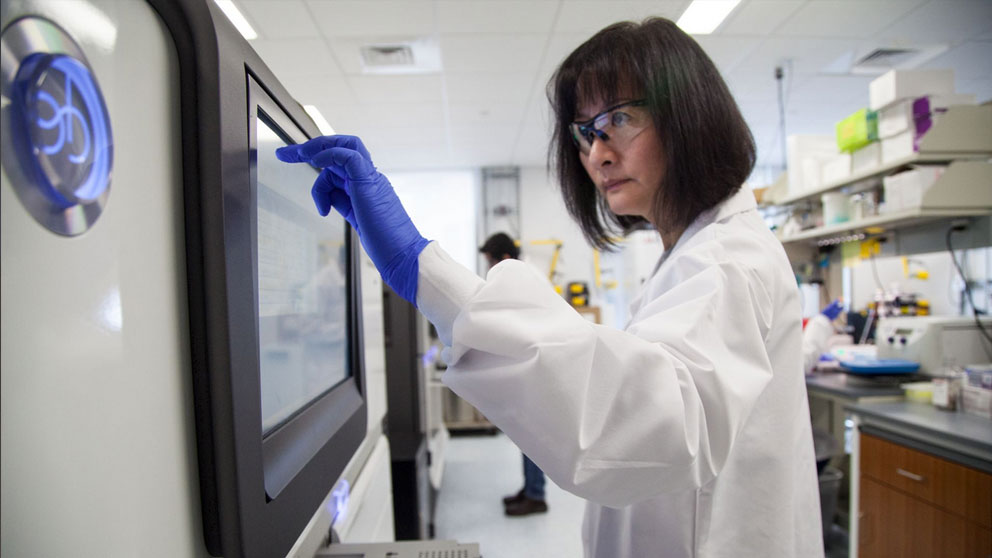
Chia-lin Wei works at a sequencing machine in her laboratory at JAX Genomic Medicine. JAX photo by Aaron Boothroyd.
The 3D structure of genomes plays a significant role in gene expression and regulation. But while technology for linear sequencing has seen great advances in speed, accuracy, resolution and cost over the past decade, tools for 3D structure detection and analysis continue to have important limitations. Methods such as ChIA-PET and Hi-C have provided important insight into chromatin interactions and 3D genome organization, but they require millions of cells and depend on disruptive preparation protocols. As a result, they only reveal binary (paired) chromatin contact points, not more complex chromatin interactions. They also yield population data, not the single-molecule and single-cell analyses needed for precise 3D genome characterizations.
JAX Director of Genome Technologies Chia-Lin Wei, Ph.D., is working to overcome these limitations. Supported by a recent four-year, $2.3M grant from the National Institute of General Medical Sciences, Wei is looking to develop a method for chromatin interaction analysis in single nuclei, with single-molecule resolution. Her proposed method, fittingly called single-molecule Chromatin Interaction Analysis (smChIA), implements recent advances in single-molecule sequencing and analysis to produce a completely new system for assaying chromatin interactions. smChIA eliminates the DNA manipulations that were previously essential to yield a clear picture of the molecular dynamics of transcription.
“We have preliminary results that indicate the potential for smChIA,” says Wei. “Once fully developed, we believe that it may exceed previous methodologies to such an extent that it will revolutionize the field of 3D genome biology. It will be able to generate genome-wide single molecule chromatin interaction maps in a variety of biological systems, and it will uncover the structural detail of multiplex chromatin loci that are currently unresolvable.”
To optimize the technology and protocols, Wei will work with well-characterized Drosophila cells, then extend it to human cells. The grant will also support development of a computational pipeline for single-cell smChIA data analysis, using established broad chromatin interaction profiles from existing ChIA-PET data for reference. Finally, she will develop a prototype stand-alone instrument optimized for smChIA applications that can subsequently be made available to the larger research community.